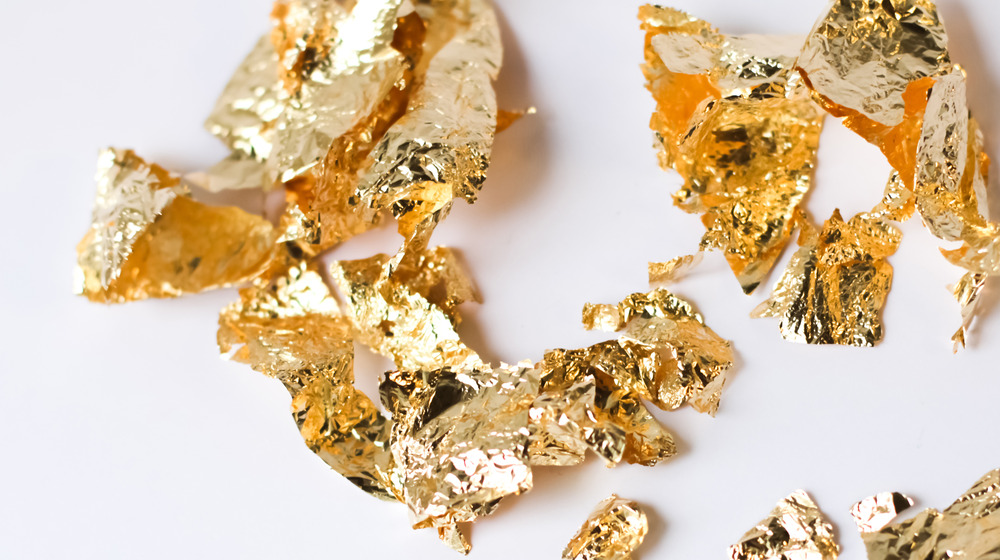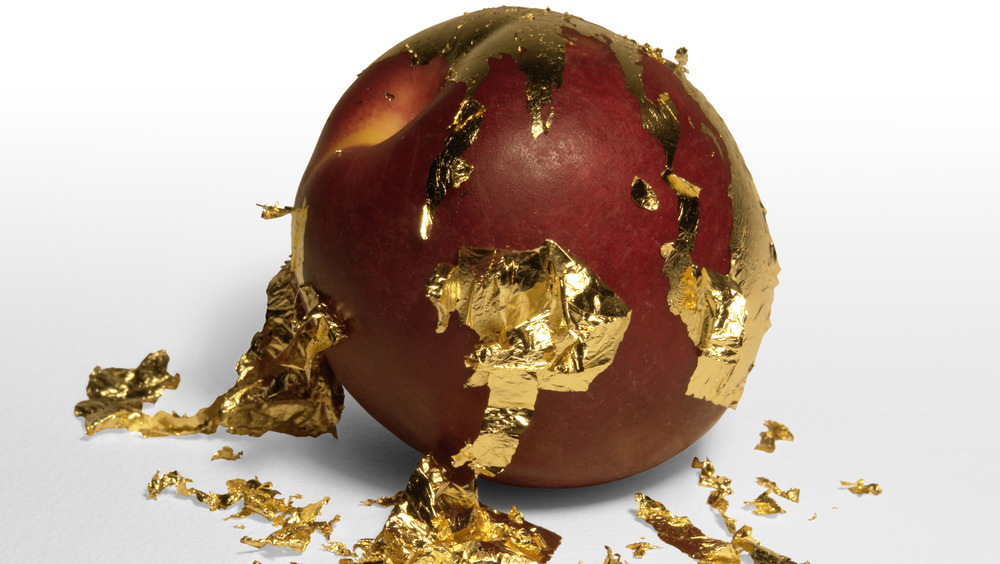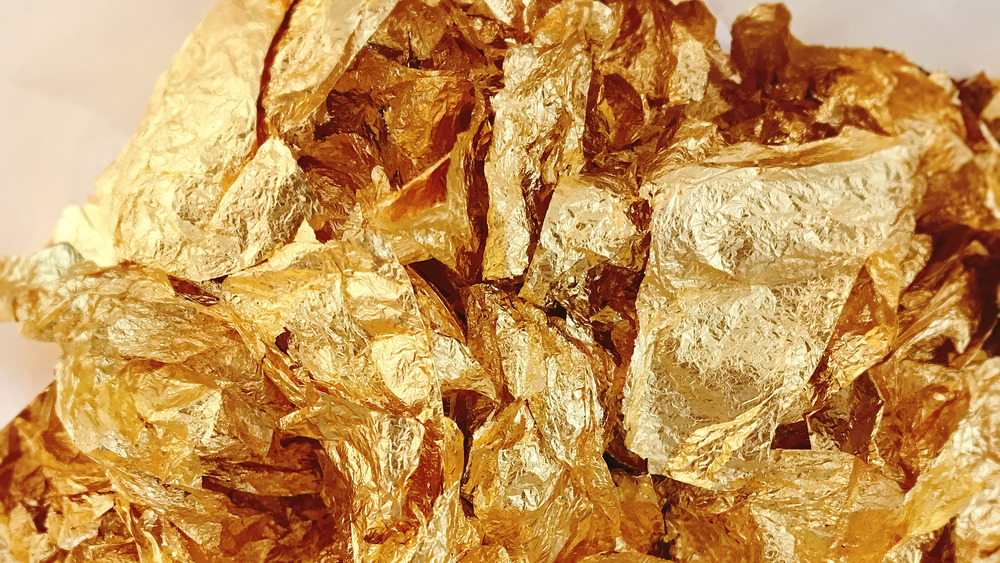How Much Edible Gold Really Costs
If you've ever seen flakes of gold leaf floating in a tantalizing bottle of liquor or glistening atop a sweet treat and wondered whether or not it's actually safe to eat, immediately followed by thoughts of where to find it and how much it might cost, we've got answers.
With gaining popularity today as a shiny garnish in a variety of food items ranging from festive vanilla cupcakes (via the Food Network) to a $100 golden doughnut sold in Williamsburg, Brooklyn (via Forbes), it is important to note that yes, this metal is safe to eat, but only when in its purest form. In order to be edible, the gold leaf should range between 22 to 24 karats, making it purer than a majority of gold jewelry, per The Spruce Eats.
Twenty-two to 24-karat gold is edible because — despite being a metal — it is considered chemically inert, which prevents it from being absorbed into the body at any point during consumption, according to Slate. This means that, while it might be the prettiest thing you bite down on, it will be tasteless because it can't dissolve into your mouth (via The Daily Meal). Pure gold's naturally inert nature also allows it to pass through the digestive tract without causing any harm. Twenty-four-karat gold is typically soft and malleable, usually containing silver, which can also pass through the body without being absorbed. Non-edible gold, however, can sometimes contain copper which can pose a serious health risk to the body if ingested in high quantities.
How Expensive is Gold Leaf?
The price of edible gold leaf varies according to how much you are looking to purchase and can be on the expensive side, but The Daily Meal reported in 2015 that it was possible to find a five-pack of 3x3-inch gold leaf sheets online for around $24. On Amazon, a 10-sheet, 3.15x3.15-inch book of 24-karat gold leaf might cost around $25. For a better understanding of just how much gold that is (or isn't), The Daily Meal explains that a gold bar similar in size and width to a standard pack of gum can be pressed into a football field-sized sheet of gold leaf.
The Spruce Eats reports that edible gold sheets can be found in various sizes ranging from 1 1/2 inches to 5 1/2 inches, typically sold as a pack of multiple sheets ranging from 5-100 sheets per package. If you prefer to buy gold leaf that has already been broken up into flakes, the edible metal will likely be packaged in a jar and available in various weights, ranging from 100 milligrams to 1 gram per jar. In 2012, Slate reported that 1 gram of gold leaf could cost up to $120-$160 per gram. While this may seem like a lofty investment because edible gold is very thin, you are likely to get a lot of bang for your buck; and when it comes to using gold, a little can go a long way.
Where Can I Find it and How Should I Store it?
According to The Spruce Eats, gold leaf can be found readily available for purchase online via specialty marketplaces, but you may also be able to find it on the shelves at your local cake and candy stores. While there is a chance that you could find sheets for sale at some art supplies stores, it is important to ensure when buying gold leaf from non-food-related stores that the gold you are purchasing is between 22-24 karats, which ensures the metal's purity.
If stored properly, your edible gold "will last you indefinitely," making your investment even more worthwhile. After purchasing gold leaf, make sure to store it away in a cool, dry place that will never get warm or damp. Whatever container your gold leaf is stored in should be well-sealed to prevent any airflow, and any sheets of gold leaf should be laid flat to avoid tearing or wrinkling.
And when it comes to preserving your stash, be careful when applying gold leaf to items, as even just your breath can blow it away and/or it can easily become adhered to the skin.


